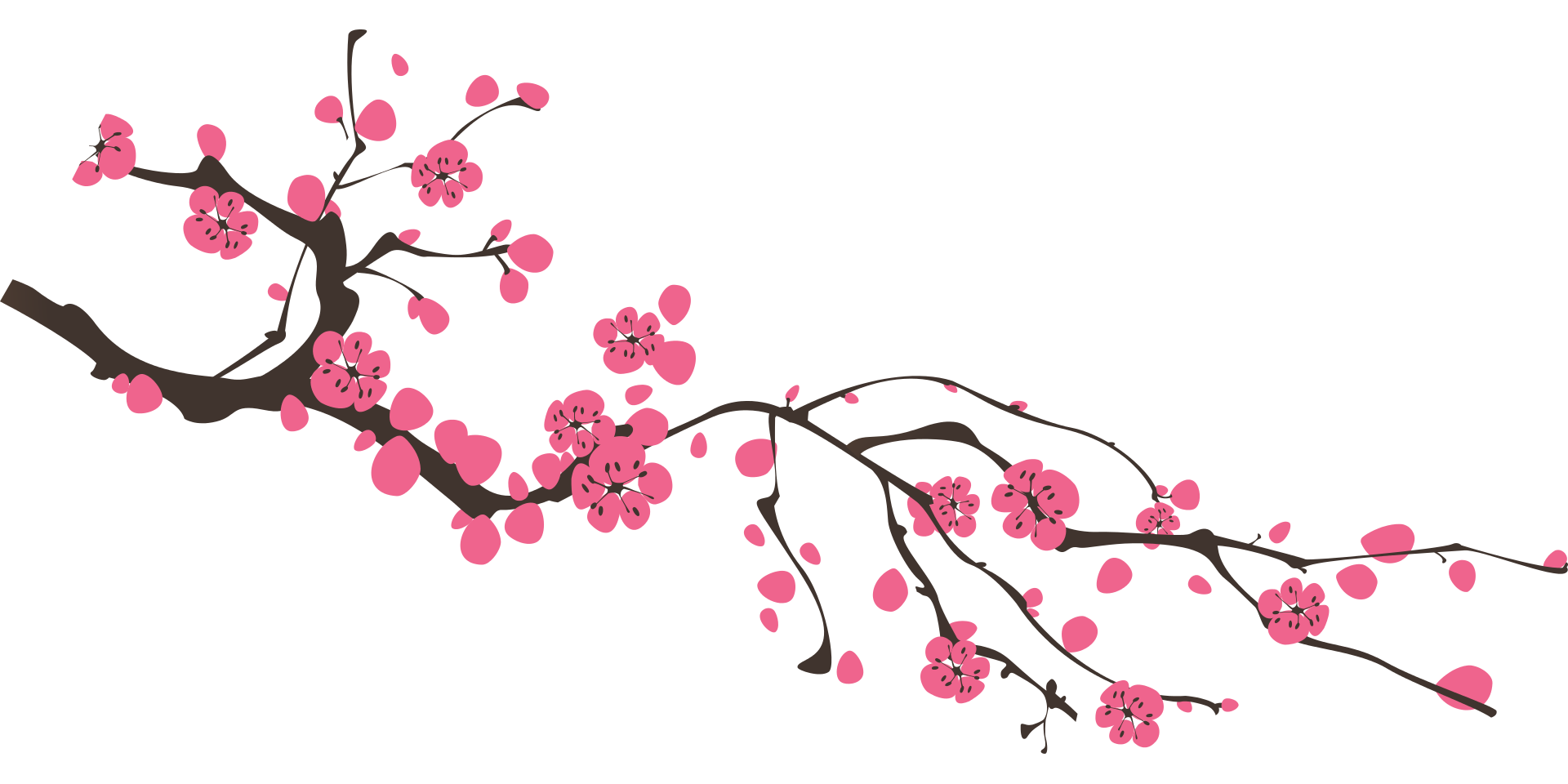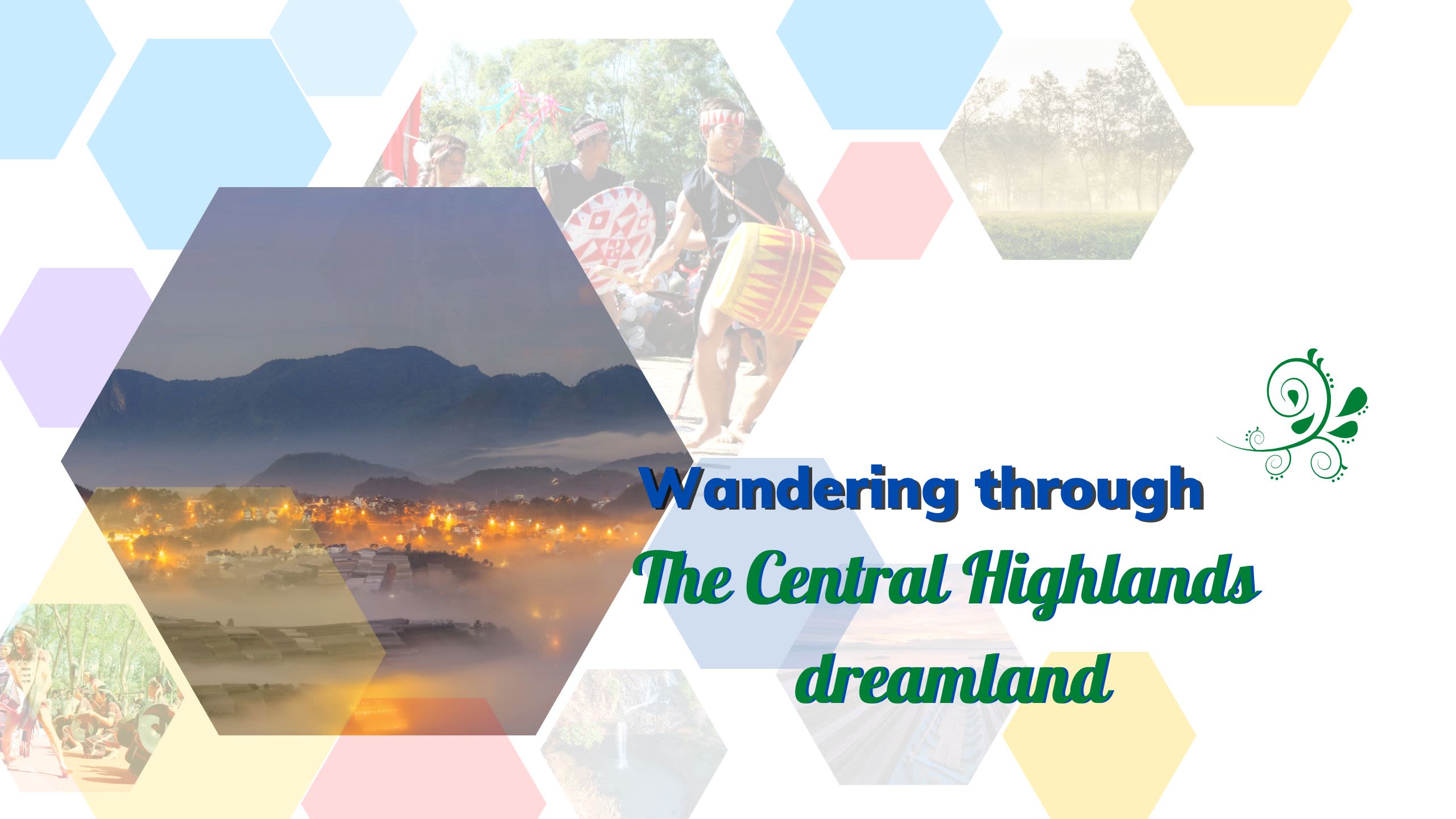
It was a year-end afternoon, and it was pouring in the Bo Y border area. The mountains and forests were soaked in water and it was bitterly cold. The cold winds here were also different, just like the distinct colours of the frontier area. Carefully walking on the moss-covered steps, I climbed to the mountaintop, where a border stone was installed to mark the boundaries of Vietnam, Laos and Cambodia - a site popularly known as the T-junction of Indochina.
The marker is located at 1,086 metres high above sea level. Casting an eye into the distance from that position, there are only rugged mountains. The Vietnamese side belongs to Kon Tum Province, the Lao side to Attapeu Province and the Cambodian side to Ratanakiri Province.
There are few places like this, where one only needs to move around the stone pillar to step on the territories of three countries. The plants are not far from one another but seem to have different colours.
When talking about the Central Highlands, people think of the mountains.
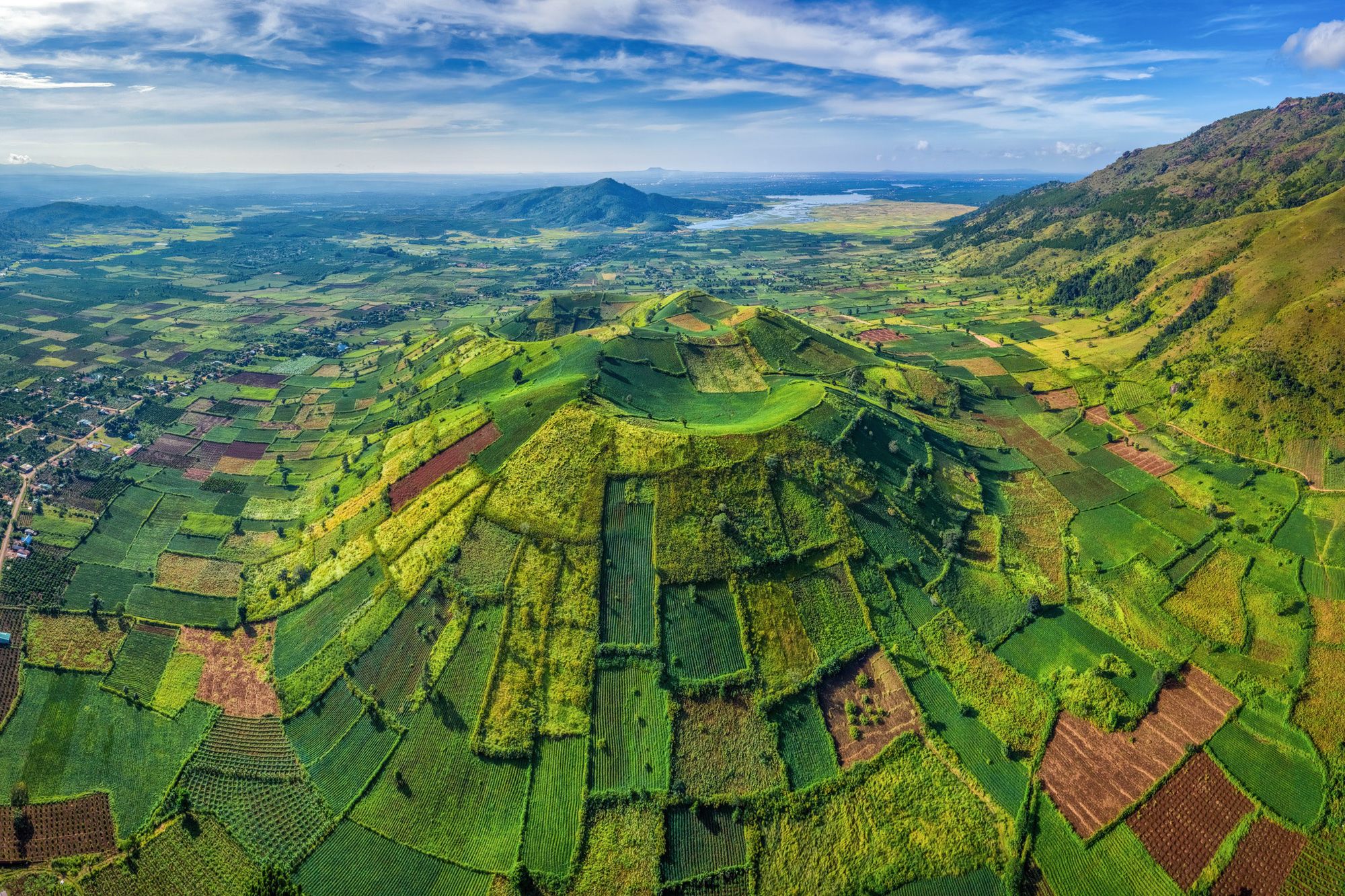
Chu Dang Ya Volcano in Gia Lai Province. Photo: the Vietnam National Administration of Tourism
Chu Dang Ya Volcano in Gia Lai Province. Photo: the Vietnam National Administration of Tourism
The place where I was standing on this rainy afternoon is not a well-known high mountain; it is only a medium hill, but it is a sacred corner.
From the boundary marker, where there were heroic battles to defend the country, it is easier for a traveller to make sense of the size and position of the Central Highlands.
When talking about the Central Highlands, people think of the mountains.
On the mountaintop, the rain was getting heavier and the vast fog was spreading further. The space is hidden and visible in sight, with one side being our mountain and the other two sides being forest of other countries.
The scenery seems to increase the quiet and nostalgia. From the Indochina Junction, I zoom my eyes in the direction of the sun towards the Central Highlands. In that stream of feelings, endless contemplation about my land appears a land that is both mysterious, fanciful, dear and close.
Mountains, rivers and streams here are the product of millions of years of creation. In the opinion of the Central Highlands people, the higher the mountain, the deeper the river, and the more waterfalls, the more magical and mysterious the gods are.
Indigenous people behave according to the echoes of mountains and rivers, while the soul of mountains, rivers and streams also blends into the veins of the upland inhabitants.
High mountain peaks and deep rivers are spaces of faith and romance.
The Central Highlands mountains and rivers exist not only as geographical indicators but also as part of the sacred soul of our country.
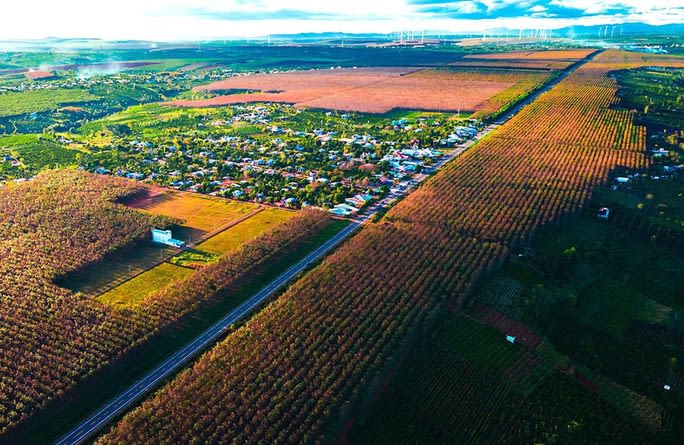
Rubber forests change leaves in residential areas in Gia Lai. Photo: the Vietnam National Administration of Tourism
Rubber forests change leaves in residential areas in Gia Lai. Photo: the Vietnam National Administration of Tourism
The three mountain ranges of Chu Yang Sin, Bidoup and Ngok Linh, stand like three rooftops amid majestic mountains, creating a solid stance, a symbol of the spirit of loyalty and pride.
Large rivers such as Krong No, Krong Ana, Serepok, Se San, and Dong Nai, originate from high mountains and weave through forests and villages like colourful patterns, carrying sediments and historical and cultural values.
From the villages with their backs to the mountains, facing the river, the Dam San, Xing Nha, Khinh Du, Dyong Du, and Dam Noi epic songs were born.
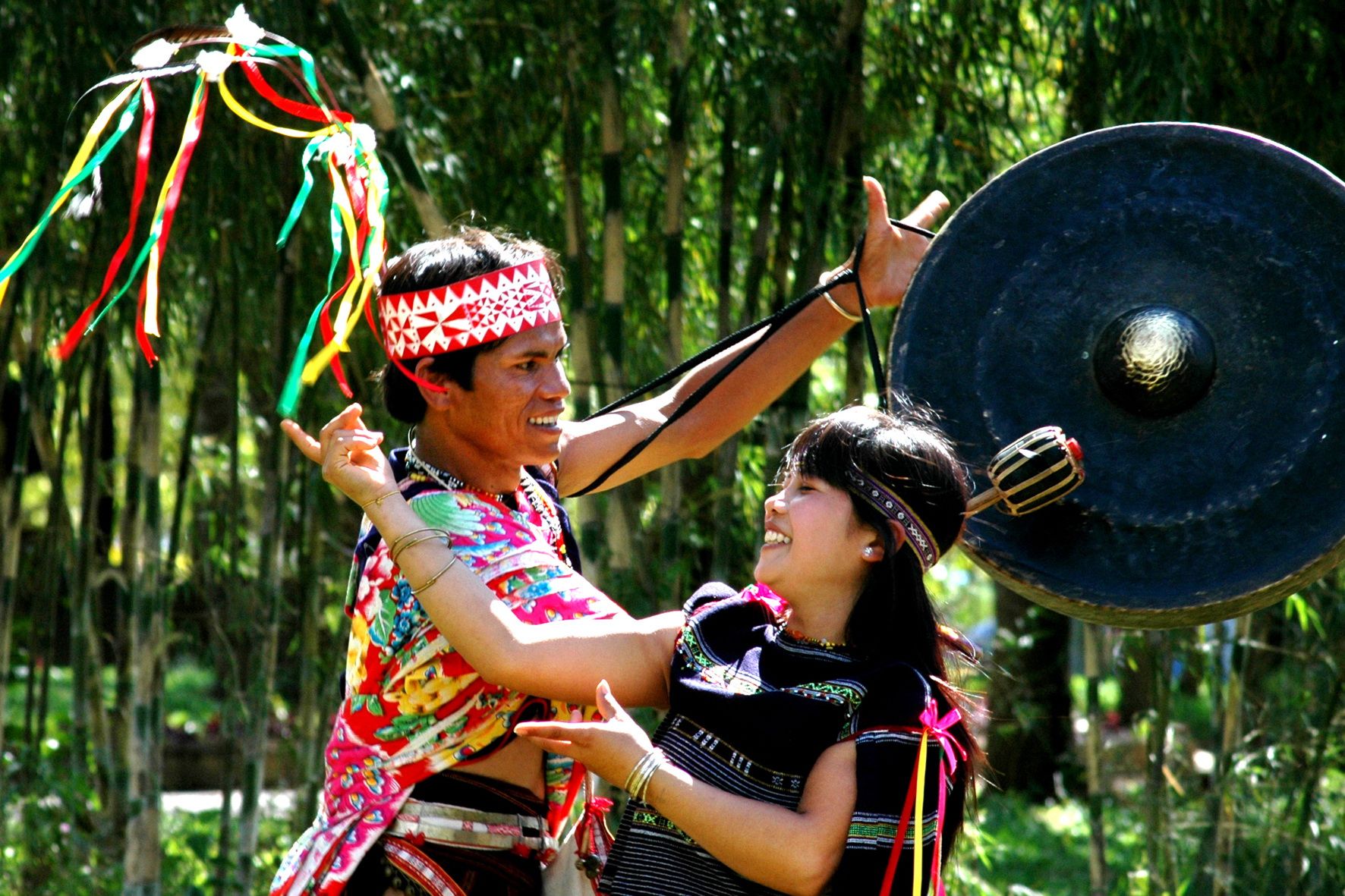
Gong dance in the Central Highlands. Photo: Nhan Dan Newspaper
Gong dance in the Central Highlands. Photo: Nhan Dan Newspaper
From mountain rocks and forest bamboo, musical instruments such as gongs, ching, lurgoong, tingning, klongput, and t'rung have made their magical sounds.
The Nri, Nrinh folk songs; Ayray, Kuut, Lahlong, and Yalyau folk songs; folk dance rhythms also blend the soul by the fire in the night at the forest, the blurred space.
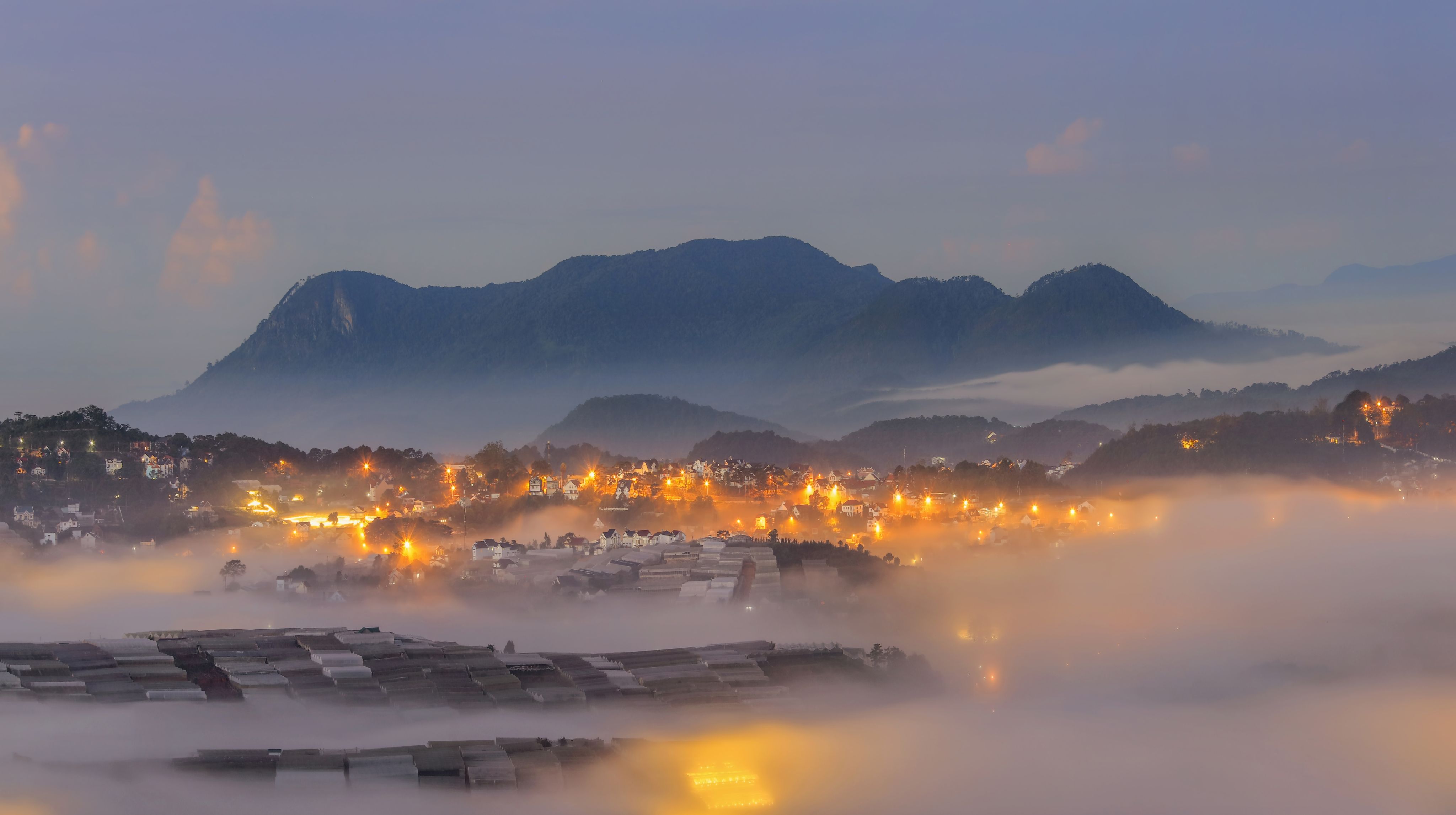
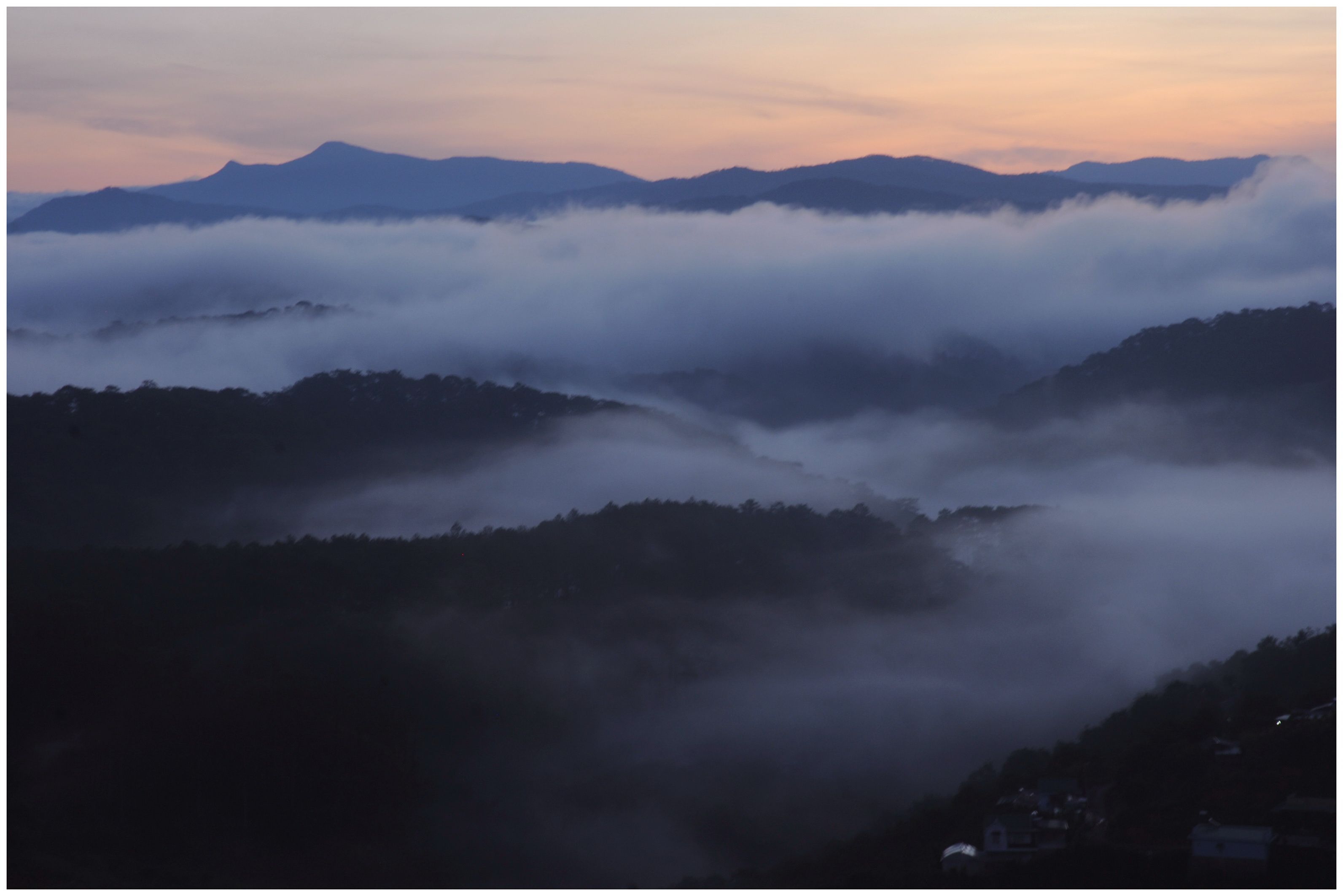
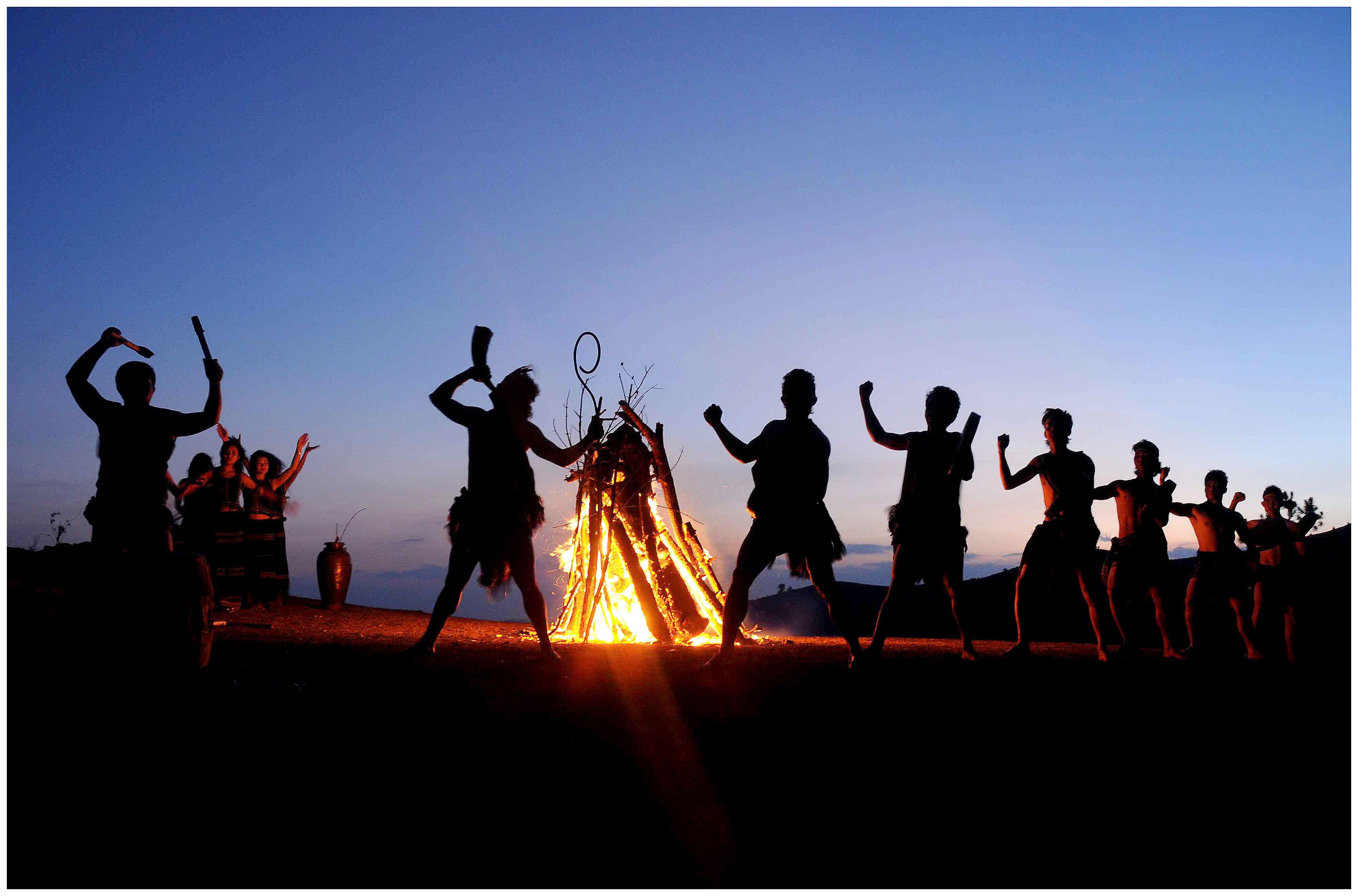
2 For many years across the lands, I always wonder, what specific images are the dimensions of the Central Highlands located and measured in?
With high mountains, deep rivers, mysterious forests, immense savannas, deep cultural values or millions of years of tectonic sediments?
It is difficult to quantify with existing images. High or low mountains and large or small rivers, all share a common source from somewhere upstream. These villages in the high mountain have almost the same origin.
The Stor village of the national hero Nup; the Saluk village, where G. Condominas found the 'Dan da' (lithophone) and wrote the research series "We Eat the Forest"; the Boxaluxieng region of the faithful Xtieng ethnic group; the Kotam village where the Ede ethnic people worship the water resource; or Dak Me land of Brau ethnic people, all have the same simple and friendly nuances.
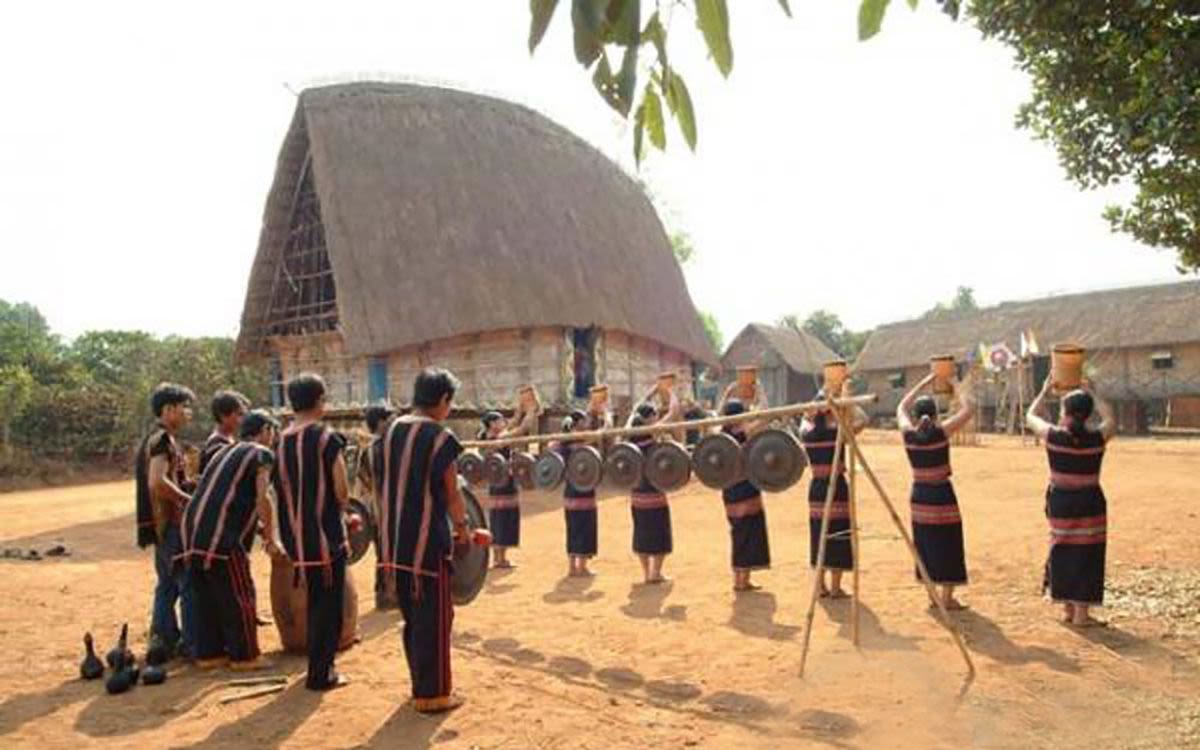
De K'Tu Village in Gia Lai. Photo: the Vietnam National Administration of Tourism
De K'Tu Village in Gia Lai. Photo: the Vietnam National Administration of Tourism
The villages I pass through are sheltered by mountains and forests, and rivers. Life and people harmonize with the mountain and rivers, creating a lasting cultural value system.
Ethnic groups in the Central Highlands region, from very small tribes such as Brau and Ro Mam to those with larger populations like Ede and Bahnar, share the same language, residence space, and the same fire circle that unite people together.
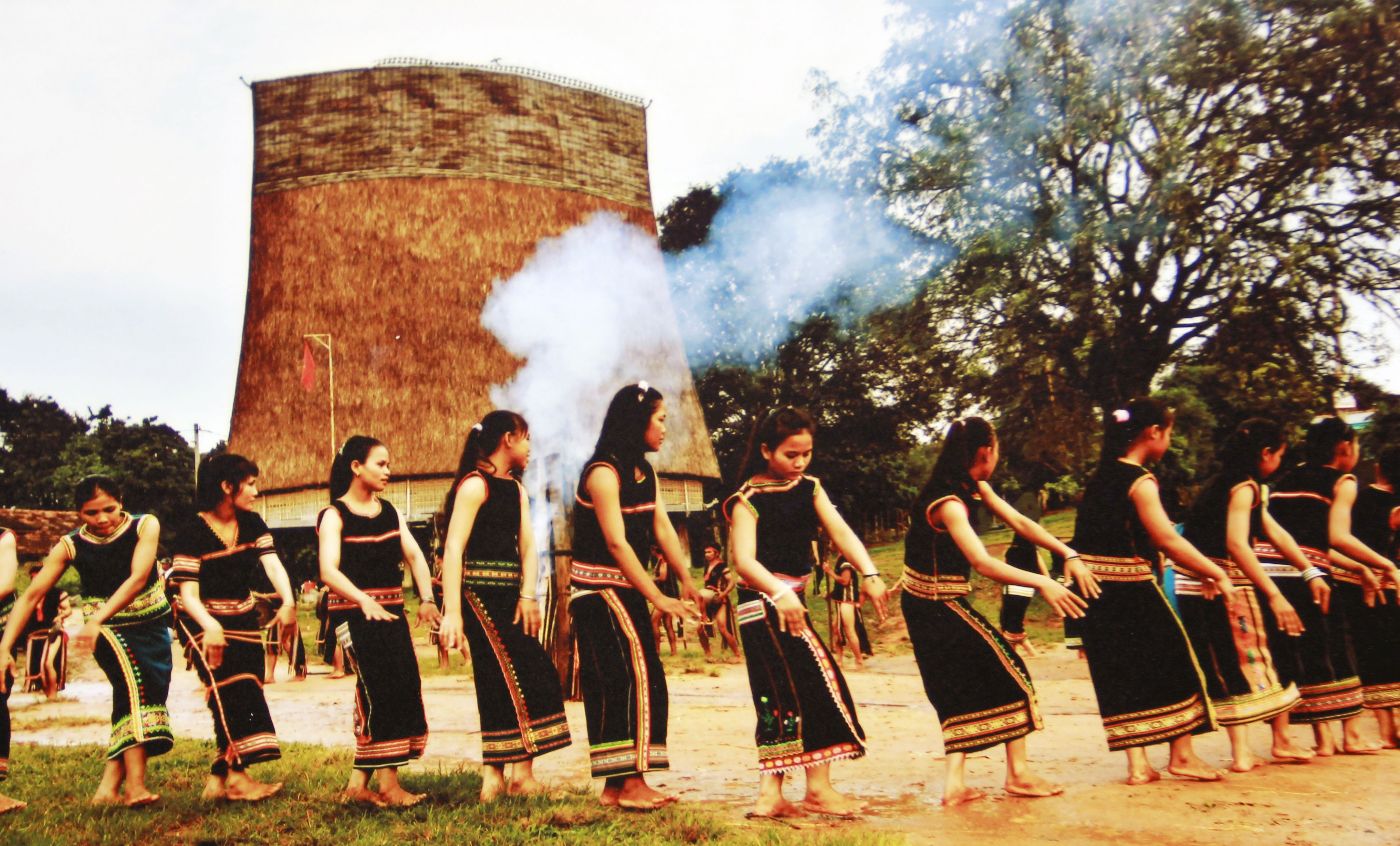
In front of a traditional Rong house. Photo: Nhan Dan Newspaper
In front of a traditional Rong house. Photo: Nhan Dan Newspaper
The Central Highlands is forever a dreamland.
At the foot of the majestic Truong Son mountain range, ethnic groups join hands to make history of the proud land.
At the foot of the majestic Truong Son mountain range, ethnic groups join hands to make history of the proud land.
It is a flow of shining memories through thousands of years.
It is the people’s steadfastness like the mountains and water in the land during the struggle to defend the country.
It is a flow of shining memories through thousands of years.
It is the people’s steadfastness like the mountains and water in the land during the struggle to defend the country.
Embracing every hardship, generations of the Central Highlanders have established their position as the owners of the jungles.

3How deeply have you understood anything about the Central Highlands? Whenever I ask myself that question, I think of the famous French ethnologist Jacques Dournes, who said, “If you must understand in order to love, you must love in order to understand.” Dournes devoted most of his life to exploring the culture of the Central Highlands.
He first came to the Central Highlands and worked there for nearly ten years as a missionary, but he was so interested in cultural studies that he wandered away from his religious mission. He was recalled to France in 1954.
The second time he returned from France and stayed here for more than ten years, he worked as a true ethnographer until he left Vietnam in 1970.
French ethnologist
J.Dournes spent a quarter of a century of his life living with the Co Ho people on Djiring Plateau and the Gia Rai people in the downstream of Ba River.
Coming to the Central Highlands as a missionary, but he was conquered by the Central Highlands culture. The priest converted his religion to suit the beliefs of the find cultural sources.
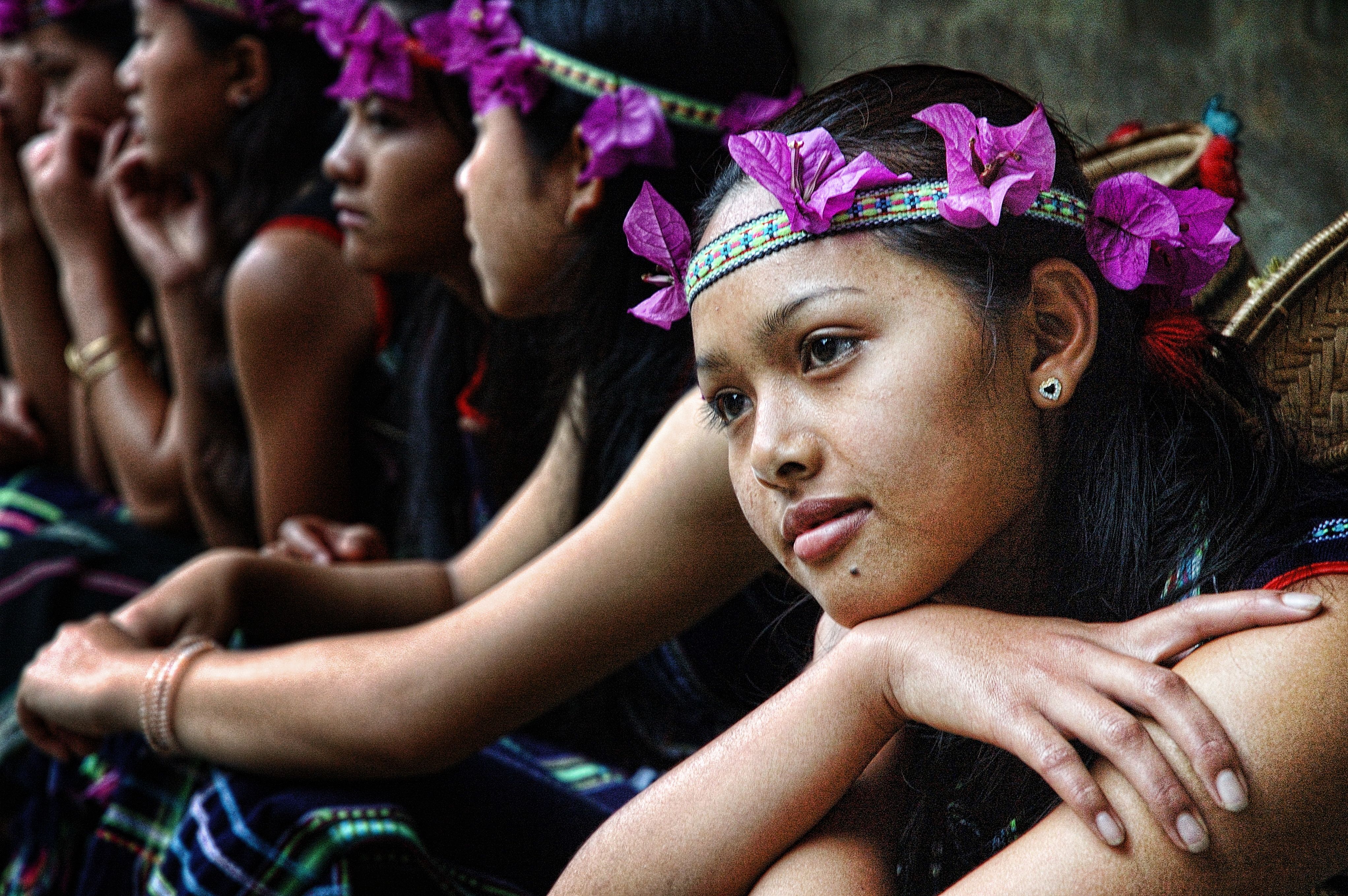
Co Ho girls at the foot of Lang Biang Mountain. Photo: Nhan Dan Newspaper
Co Ho girls at the foot of Lang Biang Mountain. Photo: Nhan Dan Newspaper
From the forest, the fields and the fire of the houses on stilts, J.Dournes has created great research works that have become the foundation for those who seek ethnology of the Central Highlands.
The works of J.Dournes are exemplary of the research that this anthropologist has left in the process of conquering the Central Highlands, or rather it was the Central Highlands that conquered him.
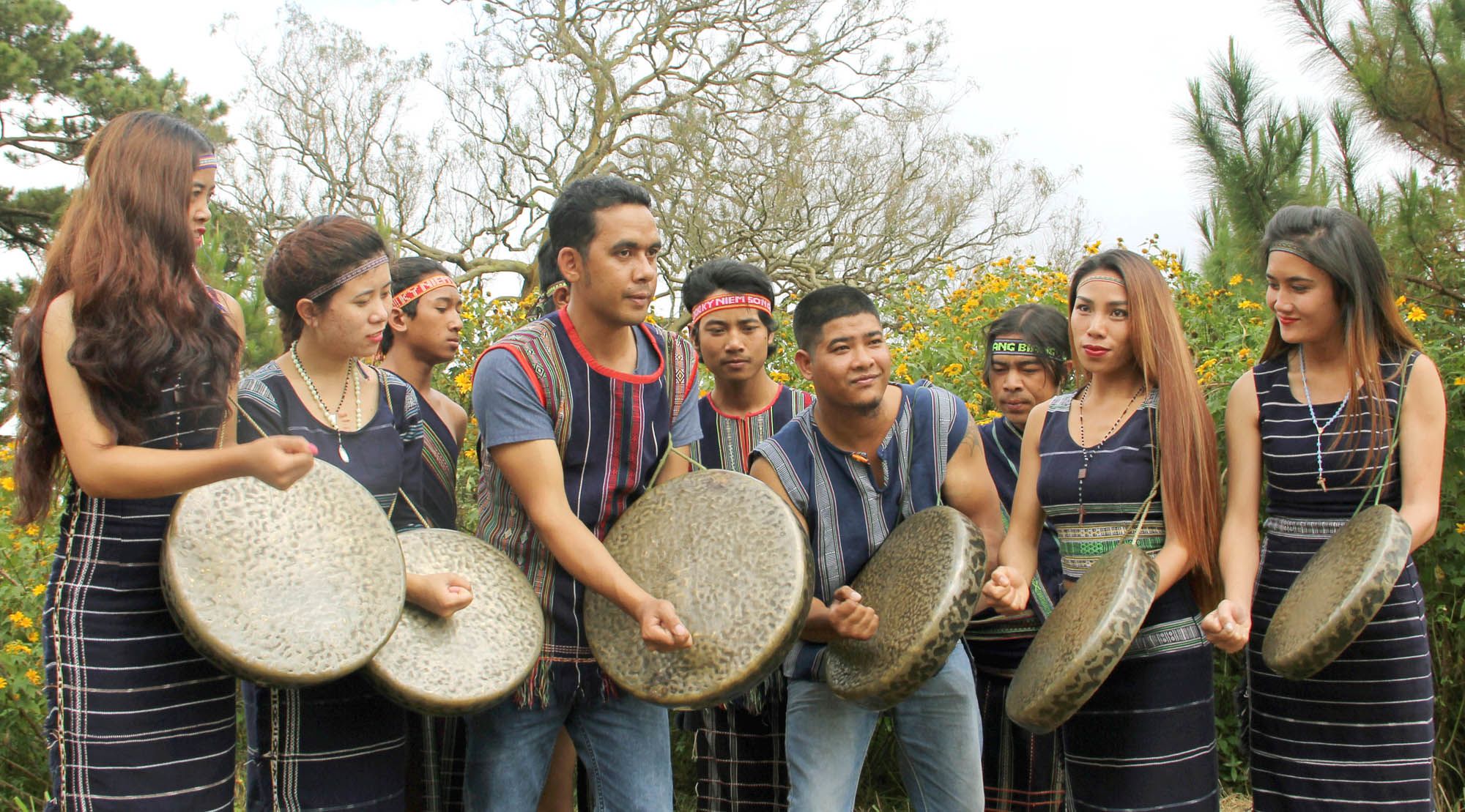
Maintaining and promoting the culture in the Central Highlands. Photo: Nhan Dan Newspaper
Maintaining and promoting the culture in the Central Highlands. Photo: Nhan Dan Newspaper
The life of J.Dournes aims to prove that the Central Highlands is a land with such a strange attraction.
I do not dare compare with J.Dournes, I'm just an ordinary person who had the opportunity to "travel through the dreamland of the Central Highlands" but fell in love with this land very much. I thought that if I loved it I would understand it but that is not the case.
Until one night in a long house in the middle of Loc Bac forest, the patriarch K'Diep of Ma people village pulled me to the fire, smeared drops of fresh chicken blood on my forehead and prayed to Yang (God) to witness the village's receipt of a Kinh ethnic person as a member.
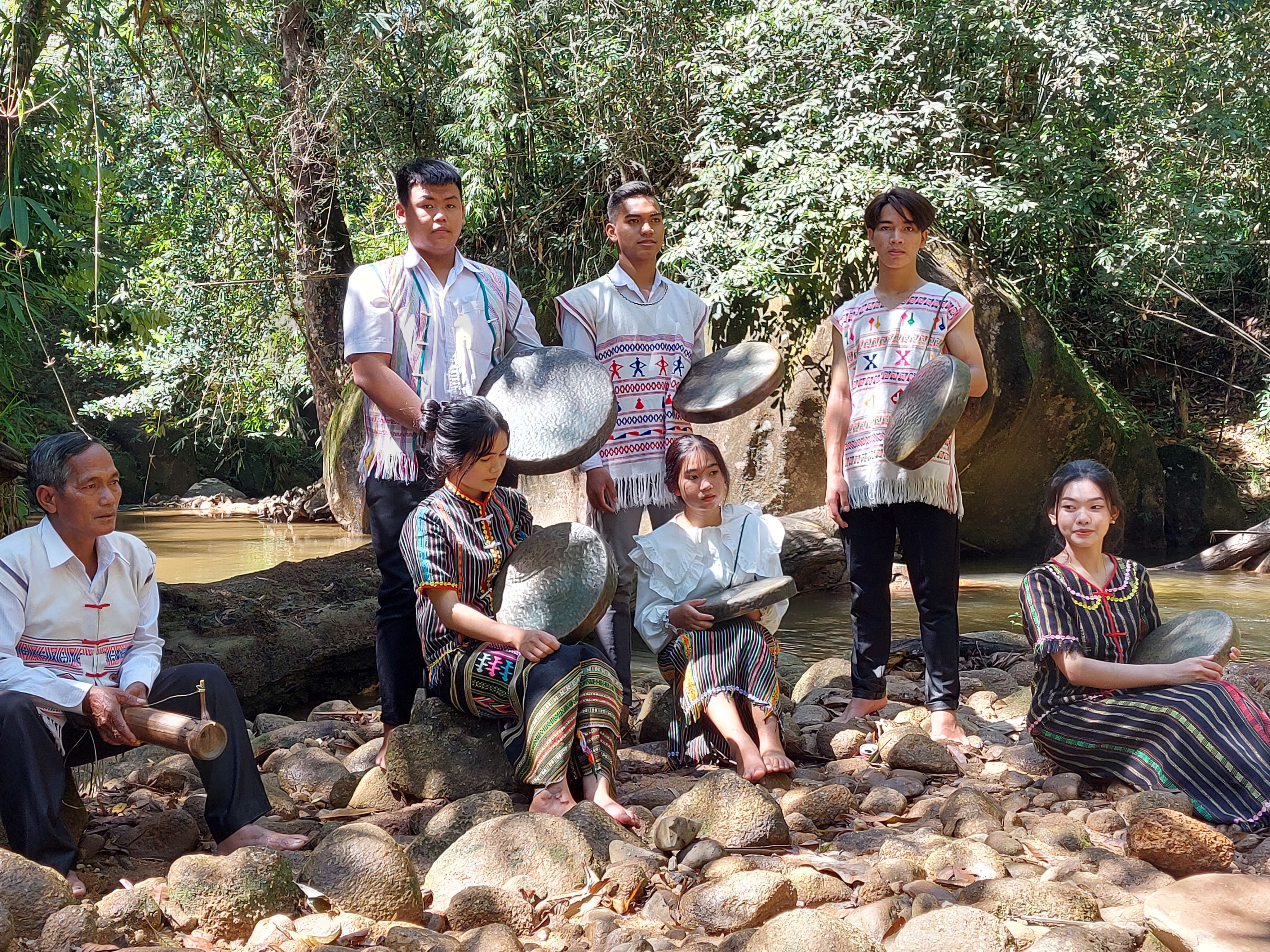
Ma artisans transmit traditional music to the younger generation. Photo: Nhan Dan Newspaper
Ma artisans transmit traditional music to the younger generation. Photo: Nhan Dan Newspaper
In an indescribable emotion, I realised that I myself did not understand anything about the Central Highlands at all.
It is an honor to be adopted as a child of the land of mountains, but it is like a new beginning. The traveler is groping again from the beginning for love!
Dimensions of the Central Highlands will be measured by what image? Back to the rainy afternoon in the corner of the forest on the three borders.
Talking to me on the front line were Captain A Hung, from the Gie-Trieng ethnic group in Kon Tum, and Private Vi Van Nghieu, from the Muong ethnic group who enlisted in the army from Thanh Hoa.
At that moment, I felt that the dimension of the Central Highlands can be measured by the border soldier's love for the country when talking about the sacred mission of the land keepers and the memory of the canoe that brought the army to the battle like in the old days.
That afternoon, I sat with village elder Y Pan of the Brau ethnic group in Dak Me Village, who is over ninety years old.
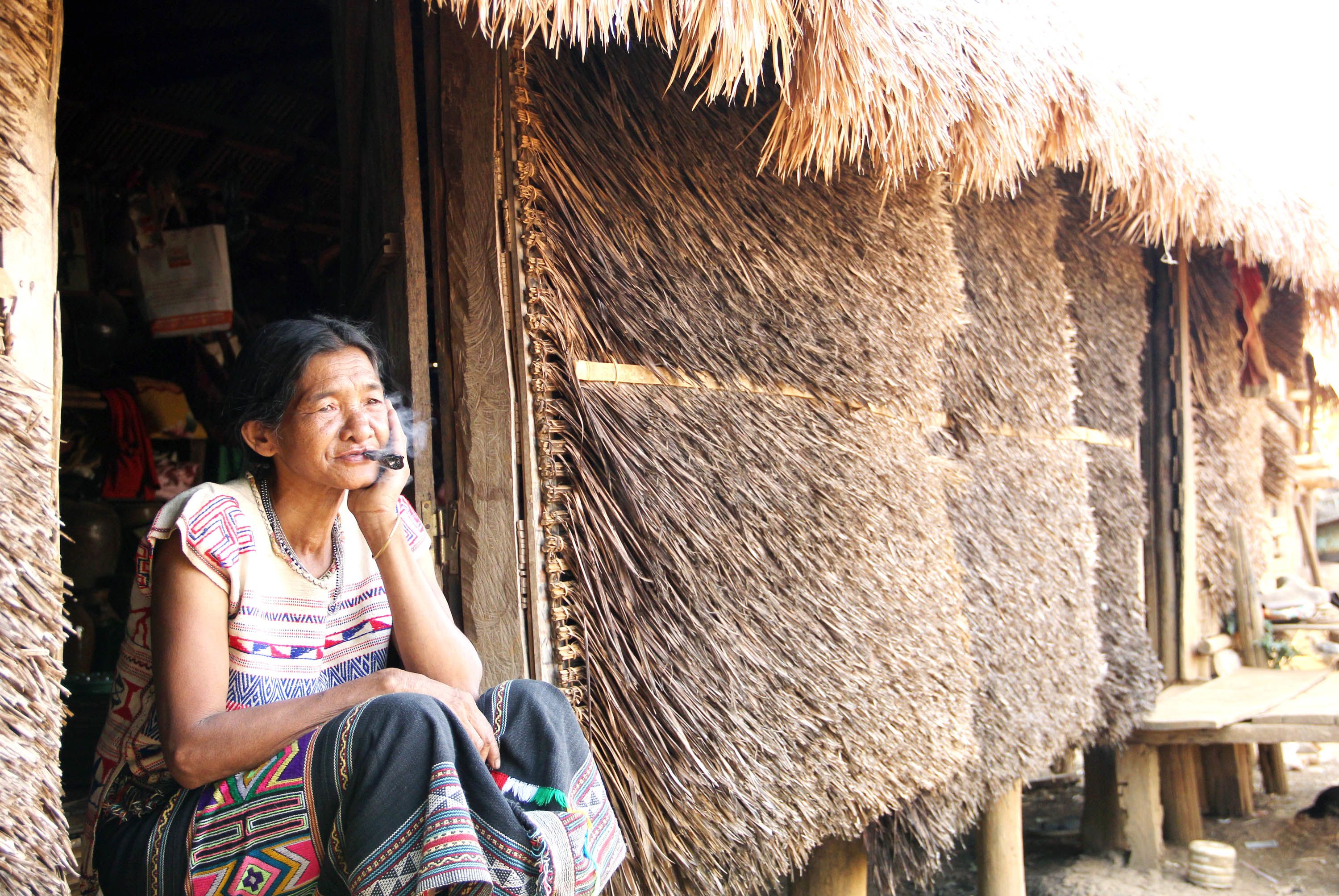
Next to the door of a traditional long house of the Ma people. Photo: Nhan Dan Newspaper
Next to the door of a traditional long house of the Ma people. Photo: Nhan Dan Newspaper
Village elder Y Pan told me about her people, the survival story and culture of an ethnic group with only 322 people, less than the number of leaves on a forest tree.
As it turns out, the Central Highlands dimension is the most concrete and simple but sacred. It is a border landmark, an ancient tree in the forest, a craggy rock on the mountain. They are the people who persistently preserve their ethnic culture and the brave soldiers who serve as a living milestone to protect every inch of their homeland.

I also understood the dreamland of the Central Highlands, with millions of years of creating high mountains and deep rivers, creating magnificent epics and telling stories about the country's majestic past.
And the dreamland of the Central Highlands is as close and familiar as the people I still meet in this great land every day.
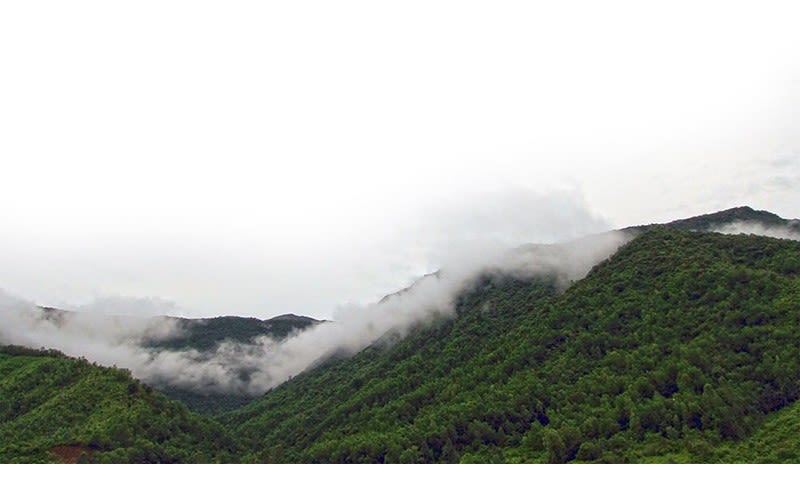
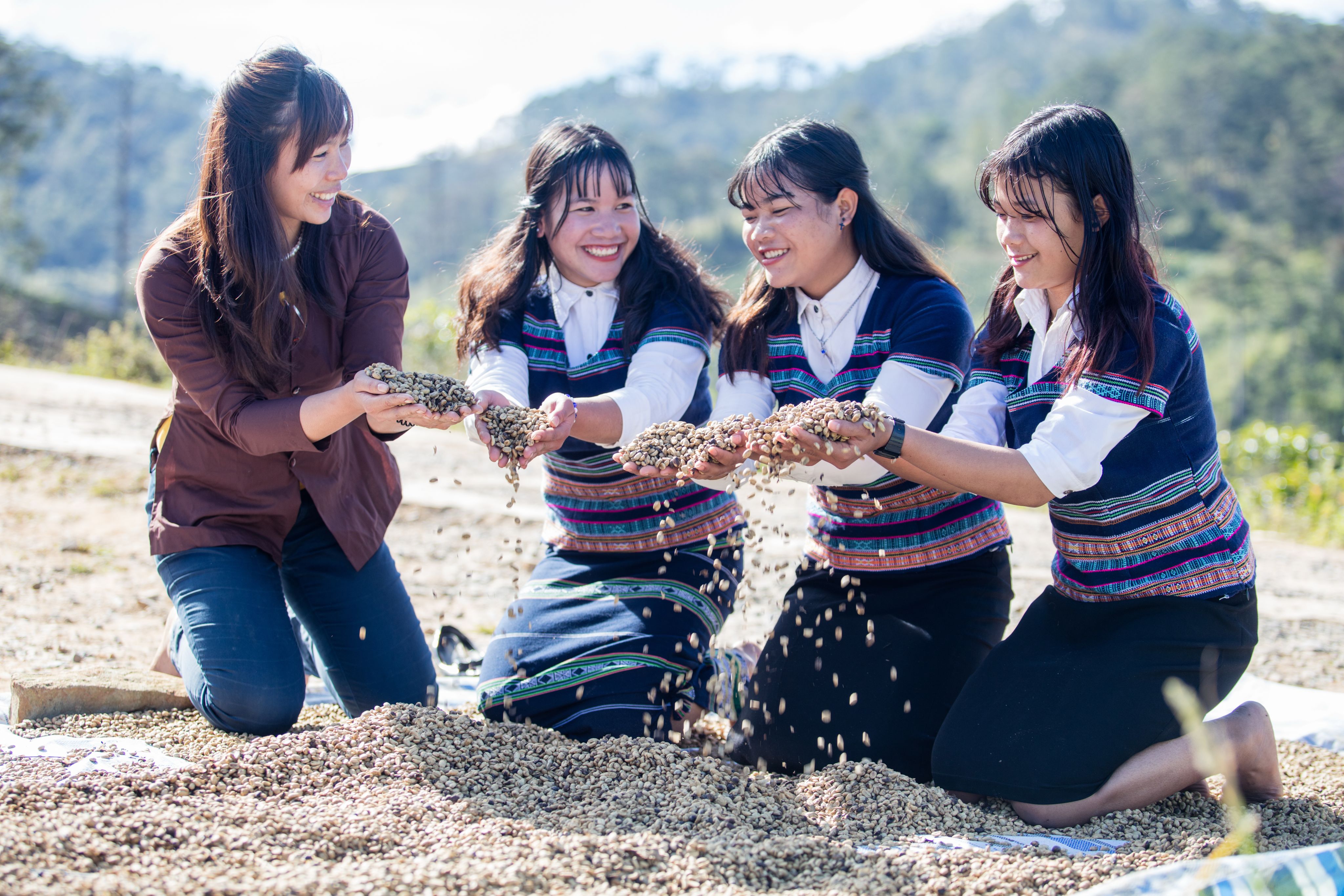
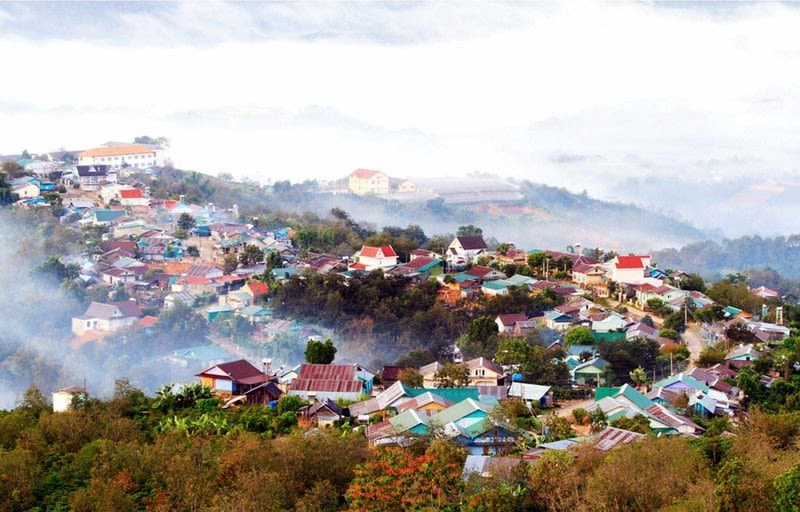
Published: January 2023
Content: Uong Thai Bieu
Design: Phuong Nam - Manh Ha
Photos: Nhan Dan, VNAT
Translation: NDO
